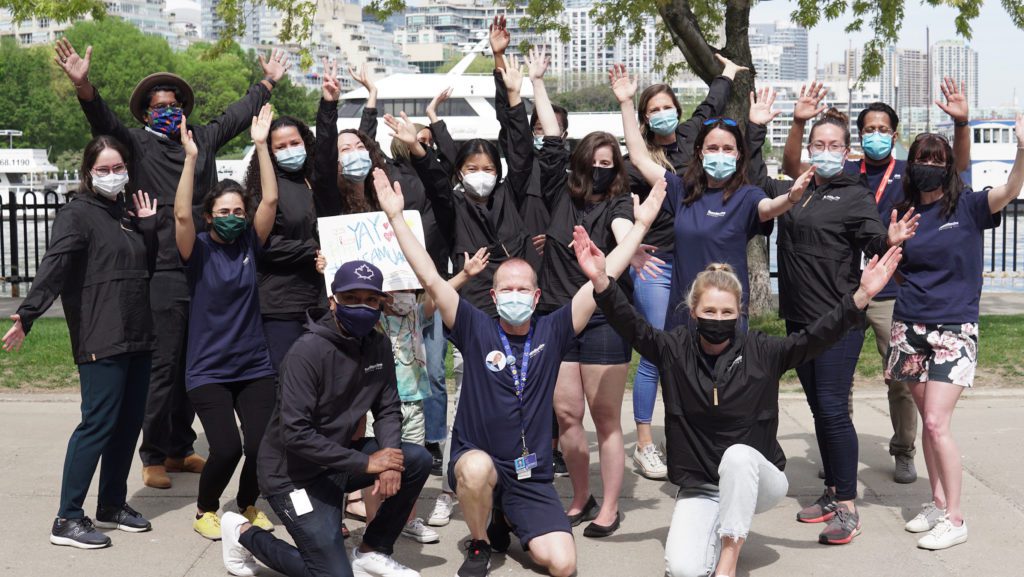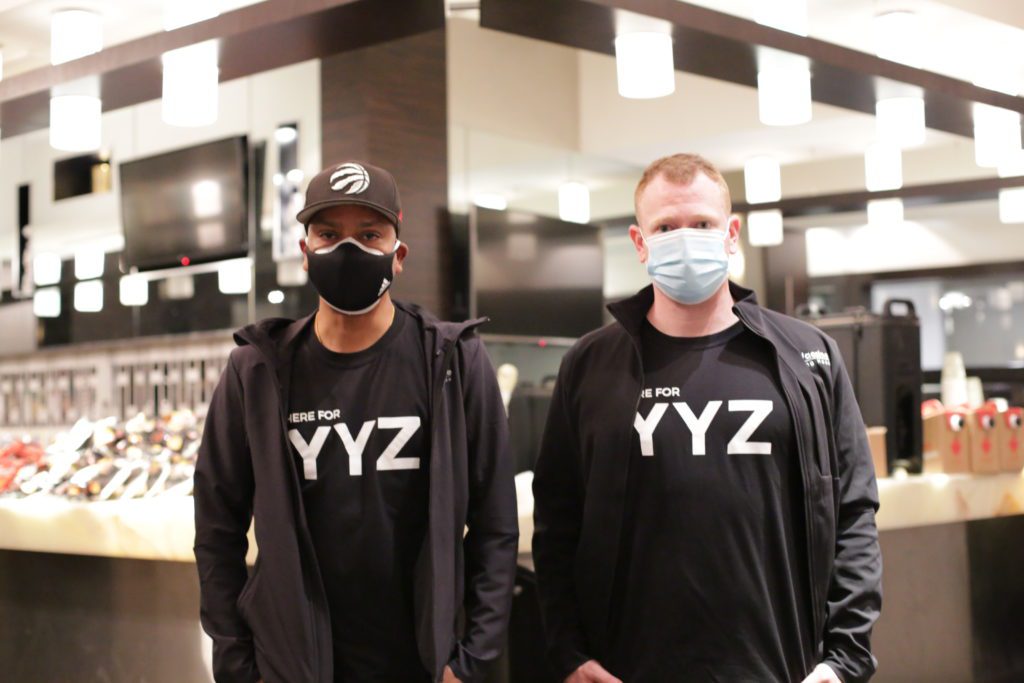“None of this work was perfect. But it was rapid and it was impactful,” Shiran Isaacksz wrote of his work organizing the Team Toronto Mobile Sprint Strategy in his Pandemic Perspectives essay.
Given the number of people vaccinated through the work that Isaacksz and Team Vaccine put in, “impactful” seems like an understatement.
His team helped find innovative locations for vaccine pop-up clinics, from basketball courts and museums to churches and mosques. He has also helped organize some of the most successful vaccination events in the city, including Toronto’s Vaccine Day on June 27 that saw a record 26,000 people vaccinated at Scotiabank Arena.
Isaacksz is lead for the Joint Operations Table, the group that brought all the resources and vaccines to each vaccination location. He was responsible for ensuring that communities were heard and teams could be directed to the right place at the right time. He was also the co-lead for Toronto Public Health and had to come up with a strategy to quickly vaccinate as many Torontonians as possible.
Isaacksz says a significant part of this work was finding the “do-ers” to bring to the decision-making table. “That was my job – to find those individuals and bring them together, and then create the conditions for them to do their best work.”
As a key organizer in the city’s Mobile Sprint Strategy, Isaacksz leveraged his expertise to bring vaccines to neighborhoods that needed them most.
“My job was to really look at the data and bring the teams and partners together and then move forward,” he says. “We were pivoting, sometimes daily, based on need. If we saw a very large outbreak in the last month … we were looking at the genome sequencing of the data to understand where the variant was. And then we would plan our clinics in those areas to really form a ring-vaccination strategy to ensure that we’re able to mass vaccinate in those high-risk areas.”
Isaacksz says that ensuring communities had the space to lead was crucial in rolling out the clinics.
“As we moved into the vaccine equity strategy component of the work, it was really again, identifying those community leaders who had really good contacts and the trust of their neighborhoods, identifying those people that were willing to step up and support and lead the way,” he says.
“What the pandemic did was put our health-care system under a stress test and it also shone a bright light on where inequities existed. We are trying to capture some of this sociodemographic data as we do the vaccinations.”
Isaacksz, who is the vice-president for Connected Care at the University Health Network, holds two bachelor’s degrees from the University of Waterloo – one in Psychology and another in Biology – and a master’s in Health Science from the University of Toronto’s Institute of Health, Policy, Management and Evaluation. But he credits his part-time work in customer service during his student days for helping him create a patient-centred approach to vaccine availability.
“Those part-time jobs through high school and university really gave me a better appreciation of how to create a better customer experience,” he says, adding that getting people vaccinated isn’t unlike handling customer service complaints – it’s about understanding where people are coming from and what does and doesn’t work for them.
“If you’re working a late-night shift or you have child-care duties, it’s hard to book a time to go and get vaccinated. When you bring vaccines close to home, you can come downstairs and get vaccinated. So that’s been a low-barrier success strategy for us.”
Clinicians and those working at the pop-up centres are trained on how to make patients feel comfortable throughout the vaccination process.
“Whether we’re doing a mass clinic at Scotiabank arena or a small pop-up, it’s about that experience,” says Isaacksz. “And one of the things I think about is the celebratory nature of all this work for the residents getting vaccinated and for their caregivers, but also the clinicians who’ve gone through a lot through this pandemic – they found this work to be uplifting for themselves.”
But Isaacksz says there were times during the darker periods of the pandemic when the days would blur together. “You start early, you are either on the screen or you’re in a clinic, and it keeps going and it doesn’t stop.”
One of the more intense moments came during the Easter weekend as concerns grew that their work wouldn’t be enough to avoid a catastrophe.
“I get to work with some really smart people, you know, clinicians that are from the emergency room and in critical care,” says Isaacksz. “And when you hear the fear in their voice, you start to really realize how big this is … We were still vaccinating like crazy out there in the field, but we weren’t sure if it was going to work or work fast enough.”
With the support of his family at home and his growing work family, he’s been able to make it through a demanding year and a half.
“I have an amazing wife and son who’ve allowed me the opportunity to go and do this. It’s very long hours and their understanding and support is critical,” says Isaacksz. “(Then there’s my) work family who were there through these great challenges … So we’ve been kind of helping each other and keeping each other going. Even though it’s stressful, I think we all still try to find time to smile and joke around and laugh.
“And I think that creates an environment, a bubble, so that you don’t let all that stress in.”
As the intensity of the early days of the pandemic begin to fade, Isaacksz hopes that we can use the lessons we learned around efficiency and organization within the health-care system to drive collaboration in the future.
This profile was published as part of the Pillars of the Pandemic series – brought to you by the Dalla Lana School of Public Health and Closing the Gap Healthcare. We will release new profiles in the coming weeks, with 13 people being honoured in total.






The comments section is closed.